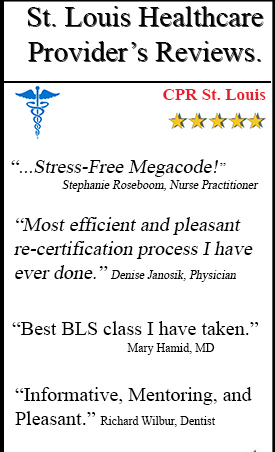Antiarrhythmic Drugs by Jennifer Fendler
Call Us Now
Get the Best CPR Class in St. Louis Today!
Antiarrhythmic drugs are used to treat arrhythmias, which is a condition that causes the heart to beat too fast or too slow. Since the heart rate is affected by too much or too little ions in the blood, there are many causes for arrhythmia. Antiarrhythmic drugs are classified into four groups. The four classes are Sodium-channel blockers, beta-blockers, potassium-channel blockers, and calcium-channel blockers.
Before you can understand these classifications you must first understand how the heart works. The heart rate is control by electrical signals that begin in the right atrial wall. Sodium channels, located in specialized cells in the heart have to open allowing sodium to leak in causing an action potential to fire. These channels open and close quickly. Once they close the calcium channels open slowly and stay open for an extended period of time. Then the calcium channels close and slow potassium channel open. This all happens very quickly inside the cells in your heart, which allows for the heart to contract and relax resulting in your heart rate. Since Heart contraction depends upon sodium, calcium and potassium entering or leaving the cells in your heart, to much or too little could cause your heart to beat too fast or too slow.
The first class sodium-channel blockers bind to and block the sodium channels which cause rapid contraction of the heart cells. One example of class 1 drugs is Quinidine, which is a drug that slows your heart rate by prolonging the time in which your heart needs to recharge and reducing the force heart contracts. Patient who have heart failure or conditions that weaken the blood pumping ability should not take these drugs.
The second class beta-blockers are drugs use to slow the heart rate by blocking the effect of the hormone Epinephrine. Epinephrine is a hormone released by the adrenal gland which goes to the beta receptors and causes the heart to work faster and harder increasing your heart rate. By blocking the hormone it reduces the number of impulses that pass through the AV node. Some examples of this drug are Toprol-XL and Coreg. Toprol is a drug which blocks beta-1 receptors. Coreg is a drug which blocks beta -1 beta-2 and alpha receptors. Coreg lowers the blood pressure more than Toprol-XL.
The third class potassium-blockers are drug used to block the potassium channels of the cells. These drugs go to and bind to the potassium receptors blocking potassium which allows the heart to relax (repolarization). Efforts to develop new antiarrhythmic drugs have focused on Type III medications because they are less likely to adversely affect the heart’s pumping ability and they act on tissues in both the upper and lower chambers of the heart. Some common drugs of Class 3 are Amiodarone and Bepridil. Generally, these drugs are used more commonly to treat arrhythmias because they have a very high success rate.
The fourth class is Calcium-channel blockers. In order for a cell to contract it needs calcium to leak into the cells. Therefore, calcium plays a big role in how fast the heart beats. Drugs such as Diltiazim and Verapamil are drugs that block the calcium channels which help to restore abnormally rapid heart rates and help to lower blood pressure. These drugs are not usually used to treat people who may be suffering with heart failure.
__________________________________________________
Pediatric Advanced Life Support (PALS) drugs
Advanced Cardiac Life Support (ACLS) drugs
Call Us Now
Get the Best CPR Class in St. Louis Today!
CPR St. Louis 44 Meramec Valley Plaza, St. Louis, MO 63088 (314) 600-2075






